
Birding Around Las Vegas, Favorite Places Far Away

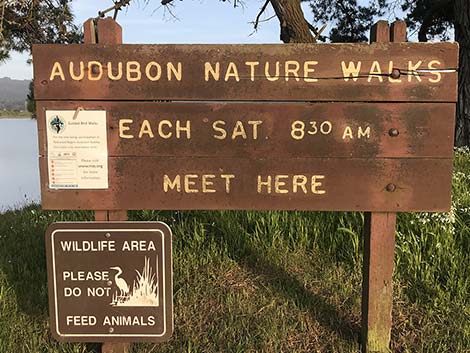 |
Overview Humboldt Bay, with the twice-daily ebb and flow of the tide, presents an extensive mud flat where thousands of shorebirds and waterfowl stop on migration or to spend the winter. The Arcata Marsh and Wildlife Sanctuary, a freshwater marsh on the north end of Humboldt Bay, is where many shorebirds go to rest during high tide when the mud flats are flooded; it is also the center of birder activity in the area. More than 250 species of birds have been seen at the marsh. I did my undergraduate work in wildlife management at Humboldt State University. The Arcata Marsh, my sanctuary from the rigors of the university and where I went to do some of my earliest wildlife research, will always be a special place for me. If you are on the northern California coast, this is a must-visit kind of place. Link to Maps |
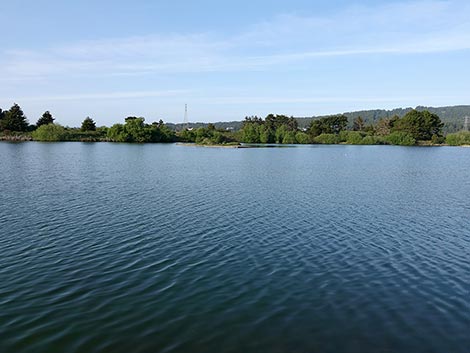 Main pond from parking area (view east) |
Description The Arcata Marsh developed out of an innovative solution to a small town sewage treatment problem. When the state mandated better, but expensive, waste water treatment, the city (the center of counter culture in northern California), looked for a different solution -- and they found it: make a marsh and give it to the birds. The Arcata Marsh is the last (tertiary) step in the sewage treatment for Arcata. Water is pumped from secondary treatment ponds (another great place to bird), into the marsh, where the water is naturally treated by microbes, aquatic creatures of all sorts, and vegetation, before it is released into Humboldt Bay. Water runs through a series of ponds, each with different characteristics: some are deeper and more open while others are shallow and full of marsh vegetation or willows, and each pond tends to attract different species of landbirds and waterfowl. |
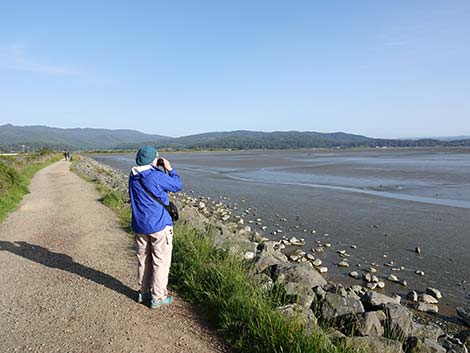 Birding the mudflats at low tide |
Check the pine trees, alders, and willows towards the center of the marsh for landbirds. Birding the marshes and willow thickets around the ponds can be great, and the open ponds on the edge of the bay have small islands that often are packed, literally shoulder to shoulder, with a variety of shorebirds during high tide. Watch the mud flats in the bay for shorebirds during the two hours before and after high tide. Be sure to check the high-tension power towers that run through the area: Peregrine Falcons like to rest on the towers before diving on the shorebirds. |
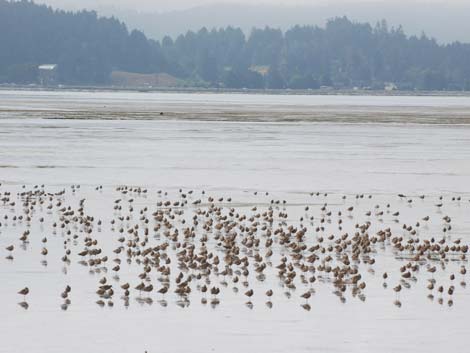 Humboldt Bay from the parking area (view south) |
Location The Arcata Marsh is located on the south end of Arcata, on the edge of Humboldt Bay (GPS coordinates: 40.85582, 124.09722. To get there from Highway 101, the main highway through the region, exit the highway (a freeway at this point) onto Samoa Boulevard (Hwy 255), the south-most off ramp to Arcata. Turn west towards the ocean, and then drive west for a couple of blocks. To get to the Arcata Marsh Interpretive Center, where you can get a good introduction to the area and current information on what is flying about, turn south (left) at the light on G Street. Drive down past my old apartment and turn right into the parking lot at the Arcata Marsh Interpretive Center. Trails from the visitor center run out into the sanctuary. |
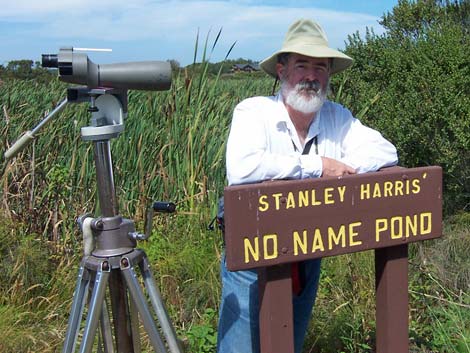 Stan Harris was my Ornithology-101 professor |
To drive to the edge of the bay from Samoa Blvd, turn south (left) at the light on I Street (2 blocks west of G Street). Drive to the end of the pavement, where there is a nice picnic area with trees on the edge the Arcata Marsh and Humboldt Bay. Hours Always open; should be considered day-use. Fees None. |
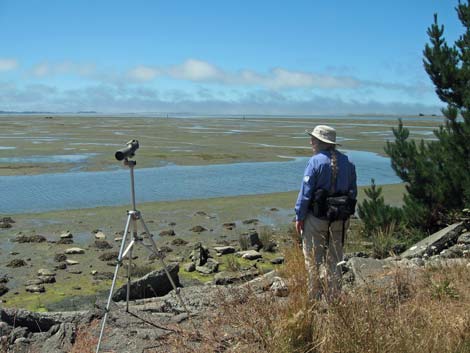 Birding at low tide |
Specialties This is a place for shorebird and ducks. Check the mudflats and islands in the pond on the edge of the bay for shorebirds (bring a spotting scope). It is not unusual to see thousands of Marbled Godwits, Least and Western Sandpipers, Dunlin, Black-bellied and a variety of small plovers, American Avocets, and other shorebirds. The ponds and the bay also attract thousands of ducks and geese. Virtually all of the western ducks come through or over-winter here, and this is a wintering area for Canada Geese and Brant. The trees and shrubs attract thousands of migrant dickey birds (warblers, sparrows, swallows, kinglets, vireos), and the marsh vegetation attracts several species or rails, American Bitterns, and Black-crowned Night-herons. |
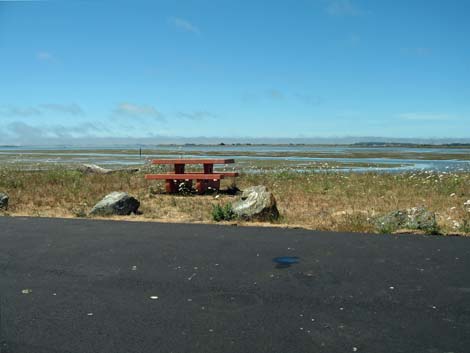 A delightful place to sit on a warm spring day |
For More Information Visit the Arcata Marsh Interpretive Center, which has interpretive displays, maps, bird lists, and a log of recent bird sightings. Interpretive Center, open daily 9-5, is located at 569 South G Street, Arcata (707-826-2359). |
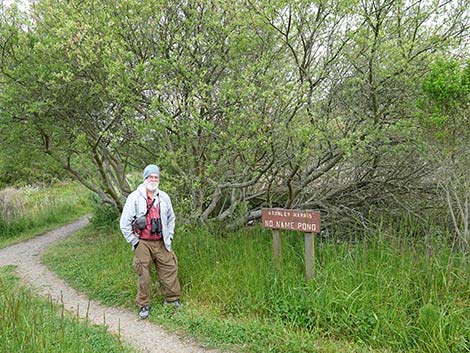 Stan Harris' No Name Pond shows how vegetation has grown |
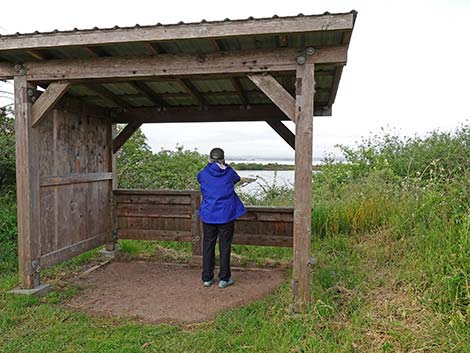 Covered blinds provide narrow views over the marsh |
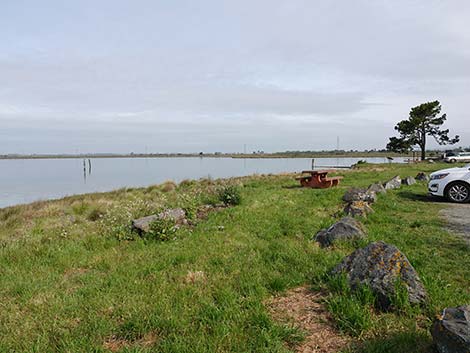 A few picnic tables invite birders to set and watch a while |
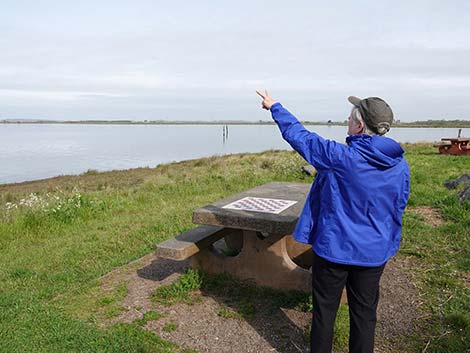 LOOK; there's two of them! |
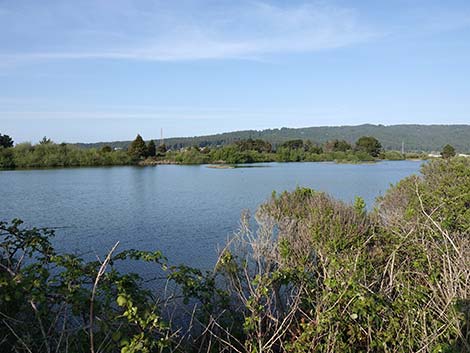 The main pond |
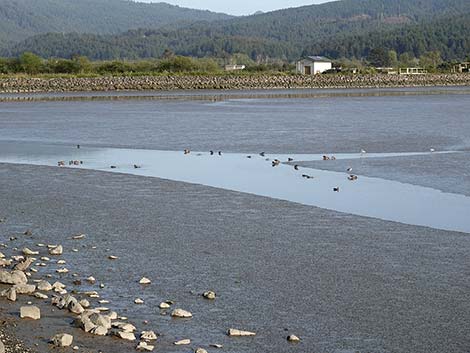 Mudflats at low tide |
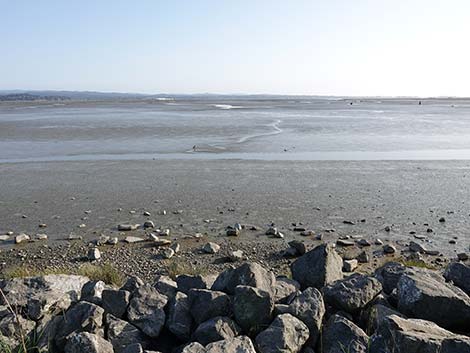 Mudflats at low tide |
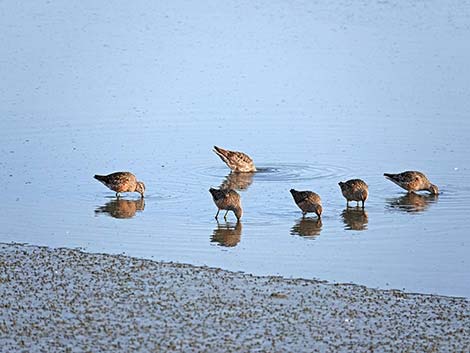 Short-billed Dowitchers working the incoming tide |
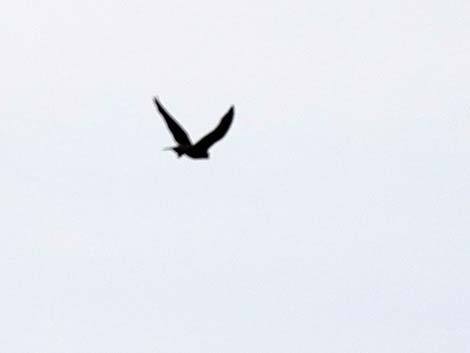 Peregrine Falcon flying high out over the mud flats |
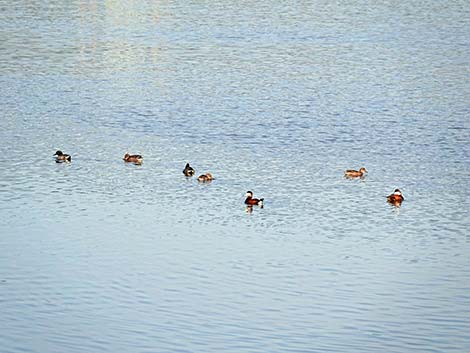 Ruddy Ducks and Green-wing Teal in the flooded bay |
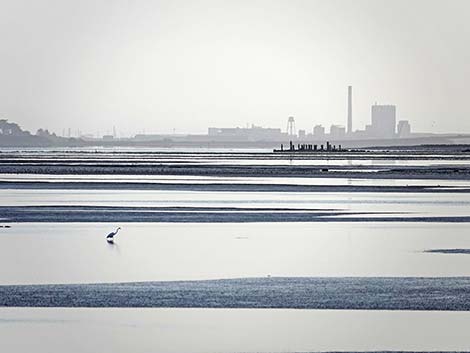 A solitary Great Egret far out on the mud flats |
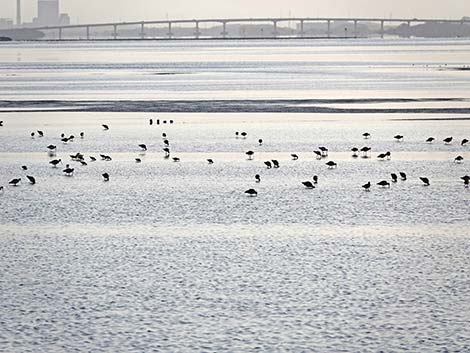 Lots of medium-sized shorebirds feeding during incoming tide |
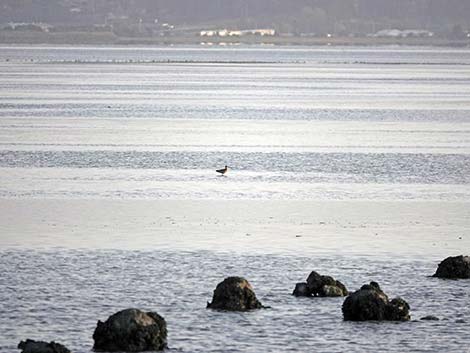 A solitary Long-billed Curlew out on the mud flats |
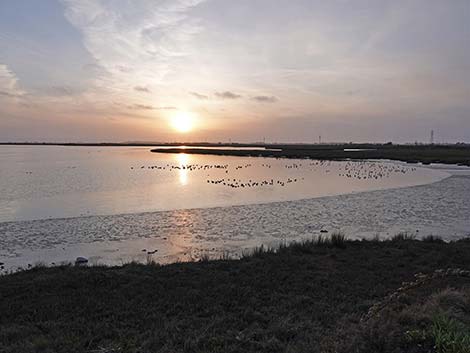 Sunset at Arcata Marsh |
Happy birding! All distances, elevations, and other facts are approximate.
![]() ; Last updated 240322
; Last updated 240322
| Birding Around Las Vegas | Glossary | Copyright, Conditions, Disclaimer | Home |